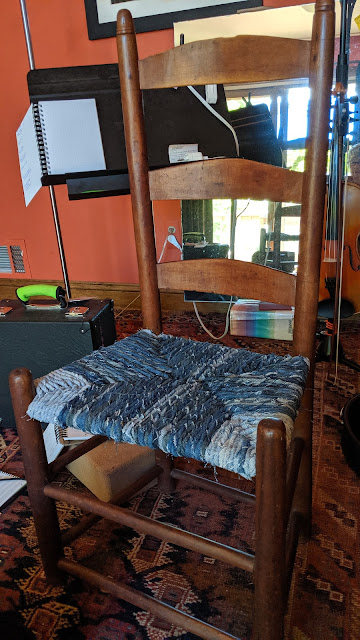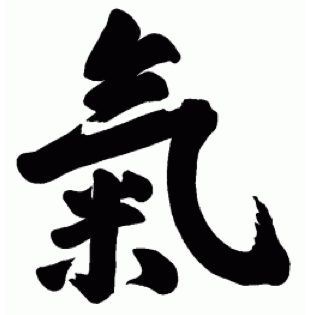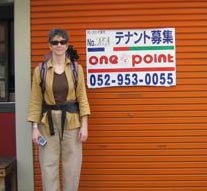Ki Development Exercises in Kokikai Aikido - Part I
At the beginning of every Kokikai Aikido class we practice ki development exercises. Beginning students often wonder about the purpose of these movements. I sometimes sense students are waiting to get the ki exercises over with so we can get to the fun part of class. Don't make this mistake! Ki development exercises are really important!
I was lucky to have an instructor who devoted a lot of attention to ki exercises, and I learned to give as much attention to them as to all the other aspects of my practice.
Mindful practice of ki development exercises helps us form good habits of mind/body coordination. One of the first things we learn in Kokikai is that we're stronger when mind and body are coordinated. (Remember "unbendable arm?") We want the habit of mind/body coordination to become second nature. So it's essential, when practicing ki development exercises, to keep working on mind/body coordination: to stay aware and not "check out." I write a lot about mindfulness, and one of the reasons I value it is because mindfulness has a direct effect on my aikido practice.
You'll notice that in class as we practice ki exercises we progress from smaller to larger movements: First moving only from elbow to wrist in nikkyo undo, to turning the whole body in tenkan undo, or even more movement in happo undo or utefuri chiriaku undo.
Instructors: Make it a habit to test your students during ki exercises. Ki testing is essential to help your students learn to assess themselves. If they're never tested, they won't know if they are strong or weak! If you don't know the appropriate ki tests for each exercise, make it your business to reach out to a higher ranking instructor at the next seminar or camp.
I'll talk about the "ki" in ki development exercises in my next post.
This is part 1 in a series of posts about ki development exercises in Kokikai Aikido. Here are links to the other posts:
Ki Development Exercises in Kokikai Aikido Part II - What is Ki?
Ki Development Exercises - Part III - Finding a Focus in the 4 Basic Principles
Ki Development Exercises for Musicians
I was lucky to have an instructor who devoted a lot of attention to ki exercises, and I learned to give as much attention to them as to all the other aspects of my practice.
Ki Development Exercises: Purpose
Sensei often compares ki exercises to strength training exercises for athletes. Quite simply: they help make us stronger. No one claims they're a substitute for technique when it's time to defend yourself. A boxer may do push-ups to become strong, but in the ring nobody's going to be doing push-ups!Mindful practice of ki development exercises helps us form good habits of mind/body coordination. One of the first things we learn in Kokikai is that we're stronger when mind and body are coordinated. (Remember "unbendable arm?") We want the habit of mind/body coordination to become second nature. So it's essential, when practicing ki development exercises, to keep working on mind/body coordination: to stay aware and not "check out." I write a lot about mindfulness, and one of the reasons I value it is because mindfulness has a direct effect on my aikido practice.
Ki Development Exercises: Form
The movements themselves come directly from our techniques: even a beginning student will recognize some of the terms: nikkyo (a wrist lock), tenkan (a turning movement), shomenuchi (an overhead strike). In ki development exercises, we practice a small (but important) part of a technique in isolation, without the added stress of having an attacker.You'll notice that in class as we practice ki exercises we progress from smaller to larger movements: First moving only from elbow to wrist in nikkyo undo, to turning the whole body in tenkan undo, or even more movement in happo undo or utefuri chiriaku undo.
Ki Development Exercises: Ki Tests
Whatever movement you are doing, practice ki exercises so that if you we're given a ki test at any time, you would be strong. The appropriate ki tests vary based on the exercise, but you should have good posture, be relaxed, find your one point, and have positive mind. Your instructor should know where to test for each exercise to help you gauge your mind-body coordination.Instructors: Make it a habit to test your students during ki exercises. Ki testing is essential to help your students learn to assess themselves. If they're never tested, they won't know if they are strong or weak! If you don't know the appropriate ki tests for each exercise, make it your business to reach out to a higher ranking instructor at the next seminar or camp.
I'll talk about the "ki" in ki development exercises in my next post.
This is part 1 in a series of posts about ki development exercises in Kokikai Aikido. Here are links to the other posts:
Ki Development Exercises in Kokikai Aikido Part II - What is Ki?
Ki Development Exercises - Part III - Finding a Focus in the 4 Basic Principles
Ki Development Exercises for Musicians




Comments
Post a Comment